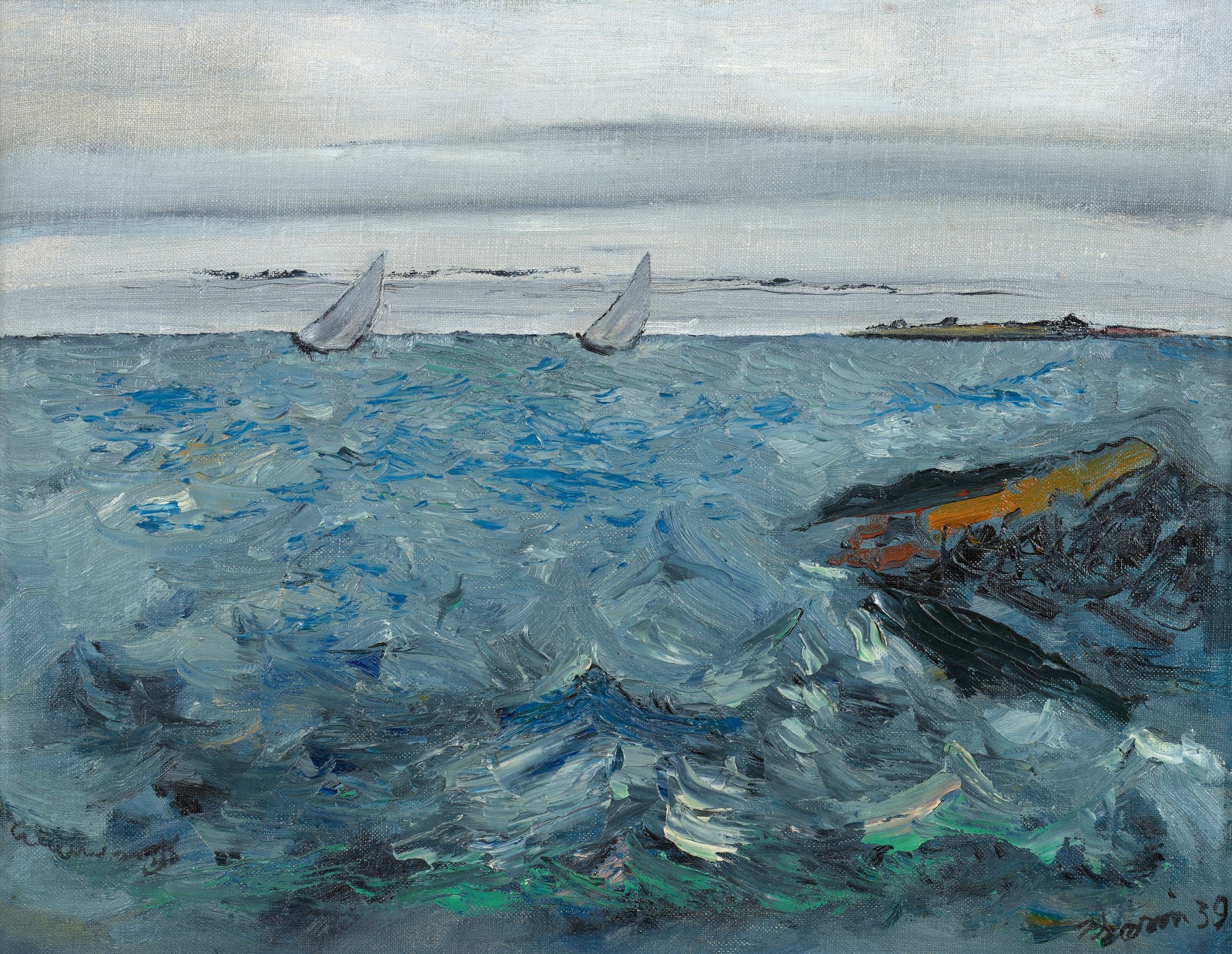John Marin American, 1870-1953
35.6 x 45.7 cm
Schoelkopf Gallery is the exclusive worldwide representative of the John Marin Foundation.
Two Sloops on a Squally Sea, 1939, demonstrates John Marin’s desire to capture the rocky islands and rough waters characteristic of his new Maine home. In 1934, he bought a cottage and lobster boat on Cape Split, Maine. Having grown tired of his earlier painting locales in Casco Bay and Stonington, Marin found new inspiration in Cape Split. In contrast to the artist’s earlier watercolors, which were often painted thinly, wet-on-wet, Two Sloops on a Squally Sea features a thick, built-up pictorial surface. The impasto foreground evokes heavy pounding waves, while dark colors, specifically Marin’s use of black pigment, convey the stormy atmosphere from which the painting draws its name. Marin’s commitment to depicting the powerful, primal forces of the ocean directly link him to Winslow Homer, the 19th Century master renowned for his Maine scenes. For instance, Ralph Flint, an art critic from the New York Sun described Marin as “the lineal descendant of the master of Prout’s Neck.”[1] Marin was often cited as Homer’s successor, yet the energy, expression and physicality that Marin instilled in his oeuvre would push past modernism and find its own descendants in the next generation of Abstract Expressionists.
[1] Ralph Flint, “John Marin Blazes New Trails,” New York Sun, January 16, 1937, p. 31 quoted in Martha Tedeschi, John Marin’s Watercolors: A Medium for Modernism (Art Institute of Chicago, 2010), p. 162.
Provenance
The artist; to
Dr. John Young (Marin’s family doctor);
By descent to Mrs. Colby (his daughter), Rumford, Maine; to
[Sale: Sotheby’s, New York, December 8, 1983, lot 210A];
[James Graham & Sons, New York]; to
Private collection, 1984; to
[Sale: Sotheby’s, New York, May 19, 2004, lot 125];
[Aaron Payne Fine Art, Santa Fe, New Mexico]; to
Private collection; to
[Sale: Sotheby’s, New York, May 18, 2016, lot 6]; to
Private collection
Literature
This work is included in the unpublished revised edition of Sheldon Reich's catalogue raisonné of the artist's work.Subscribe to our mailing list to receive updates from the gallery
* denotes required fields
We will process the personal data you have supplied in accordance with our privacy policy (available on request). You can unsubscribe or change your preferences at any time by clicking the link in our emails.

